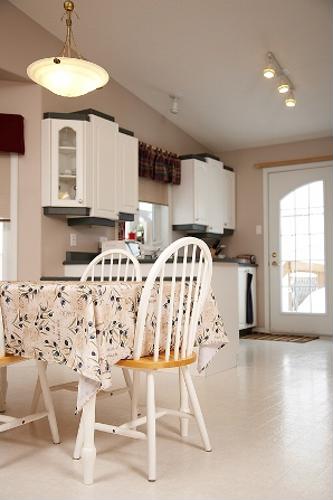
An all-white room may sound strange at first - no color at all might seem like a recipe for a boring design scheme. But if you're a fan of contemporary interior design, you've probably seen a number of modern rooms that relied solely on this clean, crisp color. Using white can be a lot more exciting than you think, but there are a few rules that should serve as guidelines. Here are the top four rules for designing with white.
1. Use more than one shade. If you've ever been to a paint store, you know how many variations of white there are. To keep your room from looking flat, you may want to choose a few different shades in the same warm or cool family. More than two tones will ensure that the variation looks intentional, not like a matching mistake.
2. Rely heavily on texture. Texture is important in any room, but it's absolutely crucial when you're using one color. Try out a mix of shiny, fuzzy, sleek, rough, lumpy and smooth surfaces to keep the eye engaged. For example, a shaggy white carpet would perfectly offset a white leather couch.
3. Bring in neutrals. Neutral shades will keep the room grounded, so pick wooden tones, metallics, beige or gray to add to the mix. Bamboo roman shades or faux wood blinds could work perfectly on the windows, while a few silver accent pieces can add a futuristic vibe.
4. Experiment with patterns. Just like varying textures, different patterns can work to keep the space interesting. In a bathroom, you could choose to mix white subway tiles with a white polka-dotted shower curtain and striped white wallpaper. Because they're the same color, they'll still match.

